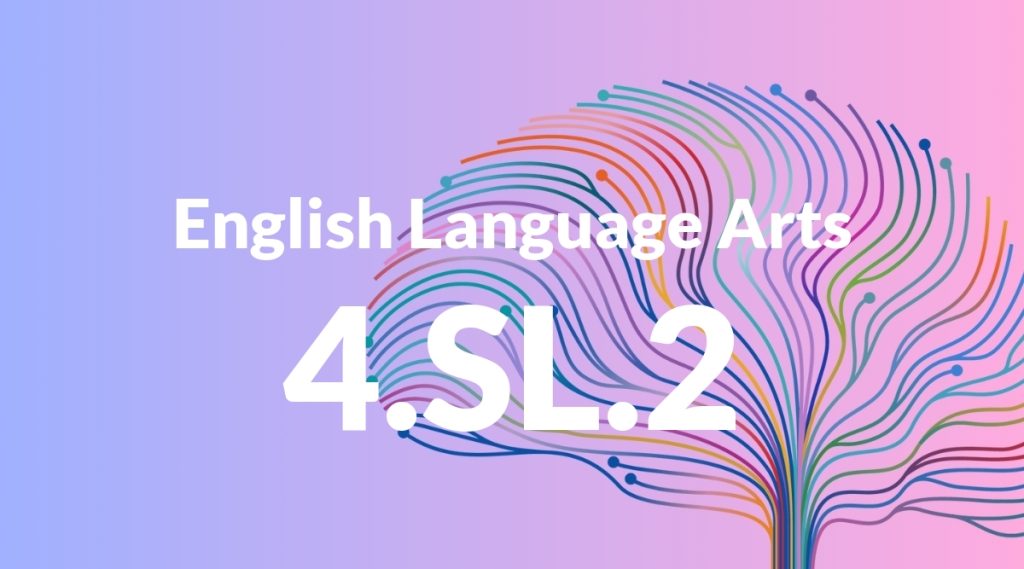Standard: 4.SL.2 – Paraphrase portions of a text read aloud or information presented in diverse media and formats, including visually, quantitatively, and orally.
Grade level: Grade 4
Subject: English Language Arts
Domain: Speaking & Listening
Teacher Overview
This standard focuses on the ability to paraphrase information presented in various formats, which is crucial for developing critical thinking and effective communication skills. It helps students understand and convey information accurately and succinctly. Students should be able to identify the main idea and key details in texts and understand basic visual and quantitative information. They should also have experience listening to and discussing orally presented information.
Students will develop skills to synthesize information from multiple sources, present their interpretations, and engage in more complex discussions and presentations.
Common Misconception 1
Some students might think paraphrasing means repeating the text exactly as it is. This is incorrect because paraphrasing involves expressing the same ideas in different words.
Intervention 1
Use side-by-side comparisons of original texts and paraphrased versions. Engage students in activities where they practice rewriting sentences in their own words.
Common Misconception 2
Students may think that only written text can be paraphrased. This is incorrect because paraphrasing can apply to information presented in any format, including visual and oral.
Intervention 2
Provide examples of different media (e.g., videos, charts) and have students practice paraphrasing information from each type. Discuss how the skills apply across various formats.
Prerequisite Knowledge
Students should be able to identify the main idea and key details of a text, understand basic visual and quantitative information, and have some experience with listening to and discussing information presented orally.
Subsequent Knowledge
After mastering this standard, students will be able to synthesize information from multiple sources, present their own interpretations, and engage in more complex discussions and presentations.
Instructional Activities
- Group discussions on paraphrasing stories read aloud
- Watching educational videos and summarizing the content
- Interpreting graphs and charts in class and explaining them
- Reading news articles and discussing the main points




